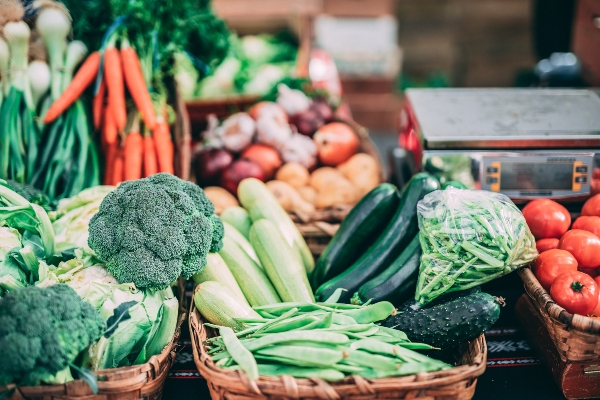Eating Seasonally in the UK
We’re moving into the summer months in the UK and this is one of the best times to start trying to eat more seasonal produce. British fruit and veg really can’t be beaten at this time of year – juicy strawberries, buttery new potatoes and flavoursome asparagus are just a few of my favourites.
In the UK we are extraordinarily lucky to have a huge selection of fruit and vegetables waiting conveniently at our local supermarkets. We can pretty much have whatever we want, whenever we want. This convenience can come at a cost – to us, both nutritionally and financially as well as to our beautiful planet, through carbon emissions and additional pesticides.

So, the big question, why eat seasonal fruit and vegetables?
Seasonal fruit and veg taste better
Seasonal produce generally comes from local farms (or at least farms in the UK). As they only have to travel a short distance to us, it means that fruits and vegetables can be left to ripen naturally and are harvested at the optimum time – which leads to fresher, tastier and more vibrant food!
On the other hand, imported fresh food (95% of fruit and 50% veg in the UK) comes from miles away and can take up to 5 days to arrive at the supermarket. It is then likely to sit on a shelf for 1-3 days and may then spend a few more in our fridge.
Although this food is perfectly safe to eat, it is likely to have been picked earlier than it should have been. Plus, the longer the time between harvest and eating, the greater the losses of flavour as well as an increase in ‘off-flavours’ in most fruit and veg.
I always like to think about strawberries when it comes to taste– it’s fair to say that mid-winter supermarket strawberries are bland in comparison to sweet, juicy mid-summer strawberries from the UK!

Eating seasonally is healthier
Did you know the nutrient density of fruit and veg declines the moment they are harvested?
As we know, imported produce can take up to 10 days from harvesting to reach our plates. In this time the nutrient quantities in these products can considerably decline, in some extreme cases by as much as 75%.
These fruits and vegetables may also have been ‘forced’ to grow and ripen unnaturally to keep up with demand. This leads to them missing key nutrient-building seasonality, further decreasing the vitamins and minerals they provide to us. The vitamin C content in spinach can be three times as much when harvesting in summer versus winter!
As seasonal foods naturally grow at the time of year they are being harvested, they have time to build up nutrients. These are then well-preserved as the produce is picked at the best time and only takes a day or two to reach us.
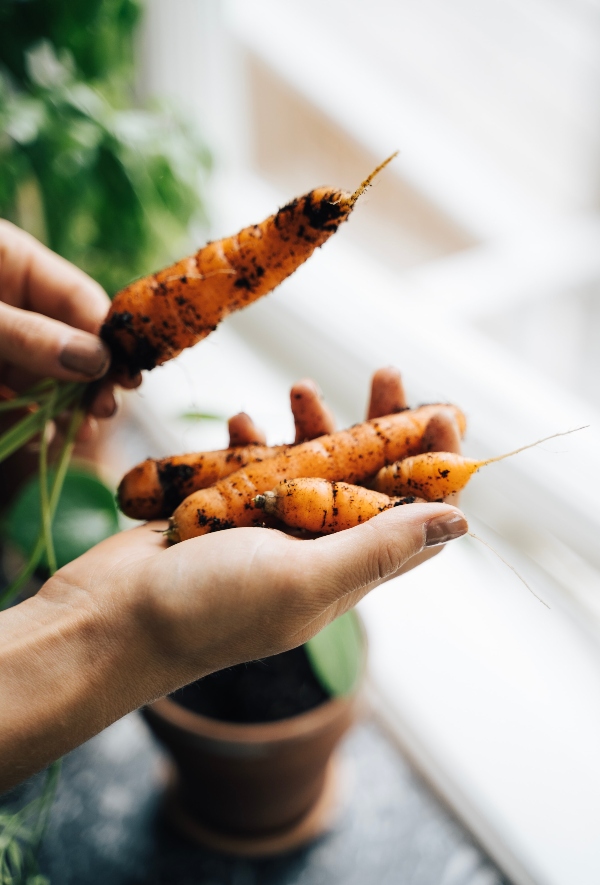
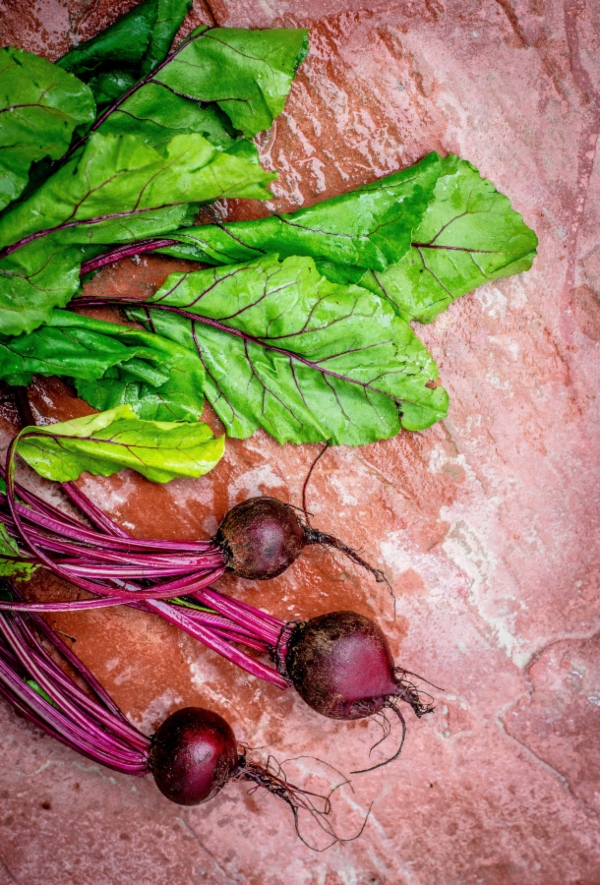
Seasonal produce is better for our planet
Seasonal eating is also a great way to support our planet. Food’s that come from faraway lands will have had to hitch a ride to get to the supermarket. The shipping emissions created from these long journeys increase our carbon footprint.
Equally, a lot of fruit and veg will need to be kept in refrigerated containers and may have needed irradiation (a process to extend shelf life, delay fruit ripening and stop vegetables sprouting) further increasing emissions.
Eating seasonal foods from close-by farms will lead to less emissions and a more environmentally-friendly way of eating. It’s also important to remember you’ll be supporting local communities and farming too.

Eating seasonal fruit & veg is better value
Such an important one at the moment. Since the Covid crisis began and life has become a little less certain, I think everyone has started to think more carefully about their bank balances – I certainly have!
If you’re looking to bring down your food bill – seasonal eating is something to think about.
Food that is in season can be grown in natural conditions and can be easily transported to us – the costs of each of these factors are passed on to us, so the lower the better. It costs a lot more to deliver us avocados from Peru than strawberries from Hampshire!
If it’s in season, it’s likely there will be a large harvest of the produce, lead to lower prices for us!
How to eat seasonally?
Firstly, farmers markets – these are brilliant for locally sourced, seasonal foods. Most areas in the UK will have these markets once or twice a week. Do a quick google and see what you can find in your local area.
Supermarket’s also generally buy produce in from the UK where they can – all fruits and veg have a label showing where they were grown. Take a look next time you’re out shopping and do your best to pick the UK produce.
My favourite option (although definitely requiring a little/lot (!) more effort and space!) – growing your own. I have a tiny patio at home meaning I have an array of herbs but have little space for anything more!
Finally, knowing what to look out for is essential. Check out my blog post on Spring and Summer seasonal eating – they give you a list of the foods in season as well as a few recipe ideas.
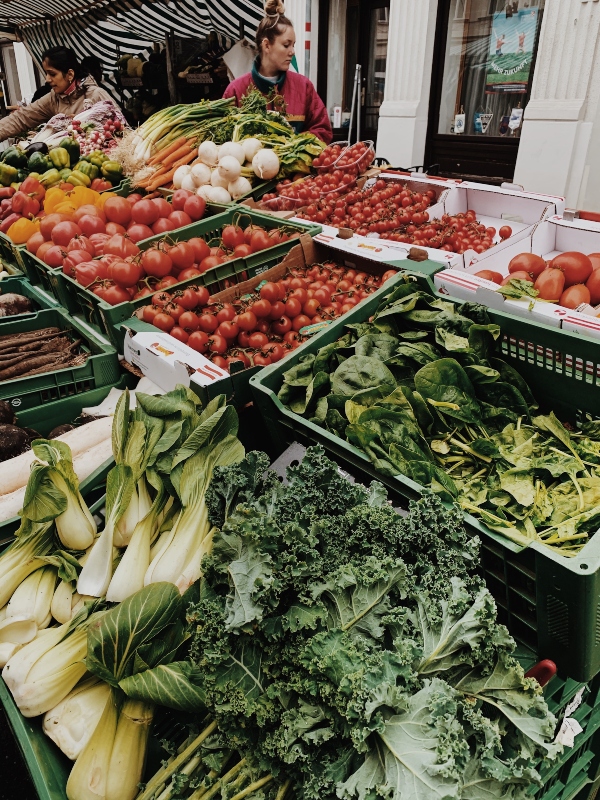
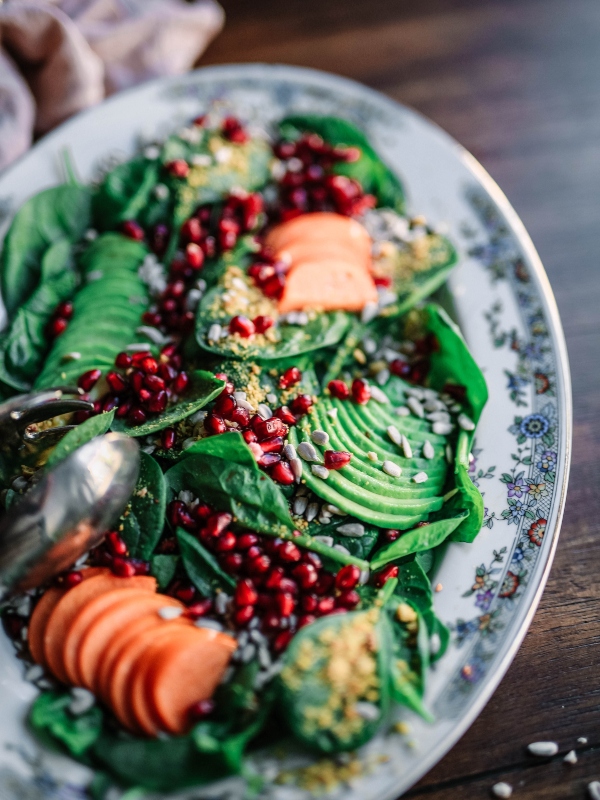
Final Thoughts
Although I do my best to eat seasonally where possible, I do also buy fruit and veg from supermarkets that is not seasonal or local. Life is about moderation and doing the best that we can. I love to eat seasonal fruit and veg and I try to focus my weekly meals around them and add in a few extras to supplement these.
However, eating a variety of different plants is important too – it’s good for our microbiome and helps our bodies get all the essential vitamins and minerals they need.
Overall though, seasonal food is cheaper, healthier, tastier and better for our planet – so why wouldn’t we choose it?
Any Questions, Let me know!

Read more articles
Eating Seasonally in the UK
We’re moving into the summer months in the UK and this is one of the best times to start trying to eat more seasonal produce. Learn more about the benefits of eating seasonally and the easiest ways to do this...
An easy trick to improve our health: Eat more fibre
Learn more about why fibre is one of my top nutrients and the best ways to increase fibre in your diet.
Join the LS Nutrition Community
Recipes & Expert Nutrition Tips in your Inbox
Stay in touch via my monthly newsletter. I share new nourishing recipes as well as practical nutrition tips. I promise never to bombard you and it’s easy to opt out at any time.
You may opt out of the newsletter at any time. Please visit the privacy policy for more information.
